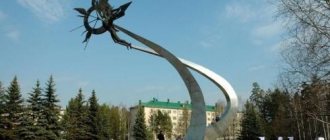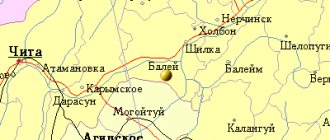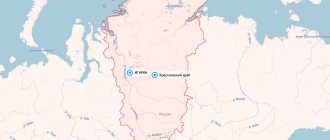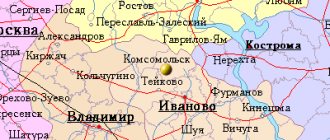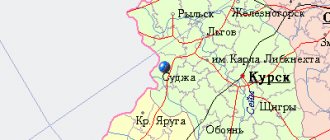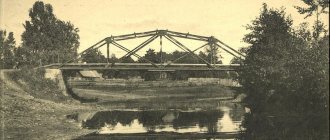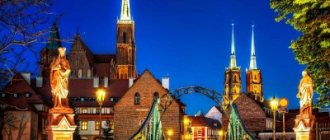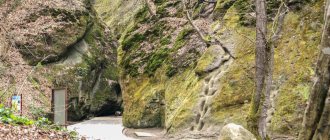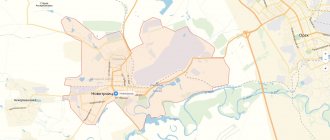Gremyachinsk is a city in the Perm region. The city's population is steadily declining, and from the once 40,000-strong city, only 8,500 people remain in 2022. All this is connected with the typical problem of the so-called Kizelovsky coal basin. The city was built around coal mines; coal was needed by the growing state and Soviet industry. With the development and closure of the mines, the territory became depressed, and the population was steadily declining.
Let's look at the Wikipedia materials:
“The emergence of the city in 1941 is associated with the development of the Gremyachinskoye coal deposit. In 1942, when coal mining began, the mining villages on the territory of the deposit and the station village of Baskaya were united into the urban-type village of Gremyachinsky; in 1949, the village was transformed into a city. During these years, a significant part of the population of the city and district were recently released Gulag prisoners (Shirokovsky and Kizelovsky ITL) and “special settlers” (mostly German prisoners of war).
The further life of the city was connected with coal mining. Gremyachinsk shared the fate of other cities in the Kizelovsky coal basin that had fallen into disrepair. During the war years, the urgent need for coal and the use of cheap labor made the development of the Gremyachinskoye deposit profitable. Since the 1960s, coal mining in the Kizelovsky basin became unprofitable and began to decline. In the 1970s, a number of other enterprises were built in the city to maintain employment, which slowed the outflow of population from the city. After the closure of the last mines in the 1990s, Gremyachinsk turned into a village near a gas compressor station.
Among the industries, the leading place is occupied by timber processing (DOC Gremyachinsky); the city also has a gas compressor station (Gremyachinsky LPU MG), a food processing plant and a bakery, and a stone quarry “Procurement”. Builders from Germany worked on the construction of the gas compressor station and the gas workers' microdistrict. Now the former one is also operating successfully, on the basis of which a new enterprise (PLPK LLC) has been created, which is engaged in deep processing of timber.”
The city itself is located around the central Lenin Street, where most of the attractions are located. When entering the city, there is a small monument to the dead miners on the right. The monument itself is from the Soviet era; marble slabs were recently installed next to it.
On the left we will see a monument to the First Builders, depicting workers - a man and a woman. Behind them is a closed and non-operating cinema. And behind the cinema you can see a small, recently built mosque.
Going further down the main street we can see the school building and the Children's Art House. In front of the building of the House of Creativity there is a monument to V.I. Lenin, and next to it is a rather interesting military memorial.
As I understand it, it is combined - staged both in honor of the heroes of the Second World War and in memory of participants in local conflicts. All this contrasts very strangely - the Guard sign, the bell, the slogan “No one is forgotten, nothing is forgotten” and the list of guys who died in Afghanistan and Chechnya.
Even on the main street there are quite a few abandoned houses and former industrial buildings. But the city has infrastructure: there is a school and kindergarten, a park, a hospital, hot water, sewerage, shops and canteens.
In the lower part of the city there is an administration building where there is a canteen. Opposite there is a large park, a huge building of the House of Culture, built in Soviet times, in front of it is a monument to V.I. Lenin.
Among the modern objects is a small Orthodox church, located in an ordinary two-story brick building, with a small dome with a cross attached to the top.
The city itself is convenient to visit, moving from White Stones to the Gremyachisky open-pit mine.
Story
The city of Gremyachinsk is located 176 km from Perm. Its history dates back to 1938, when geologists discovered coal deposits in the Gremyachaya River basin.
Development of the field was delayed for several years, until in the first months of the Great Patriotic War the country felt an urgent need for resources.
Then, in 1941, large-scale development of the coal basin and construction of mines began in this area. Basically, the work was carried out by the hands of the first German prisoners of war and liberated Gulag prisoners.
Additional information: at the construction site, due to harsh climatic conditions and hard work, many people died, especially Germans who were not accustomed to the Russian winter, which is why Gremyachinsk is called a city built “on bones.” Previously, there was a German cemetery on its territory.
When the mines began to operate in 1942, all nearby settlements of the region were united into the urban-type settlement of Gremyachinsk. It received city status already in 1949.
Over the next 10 years, coal mining exceeded the plan, the city grew and developed, and the population increased: from 10 thousand people in 1949 to 29 thousand in 1959. By the 1960s, the deposit had practically exhausted itself and coal mining ceased.
In order to create new jobs and reduce the outflow of population, in the early seventies of the twentieth century, the construction of new city-forming enterprises began: a gas compressor station and the Avtospetsoborudovanie plant. The last coal mines of the Gremyachinsky coal mining complex closed in the 1990s.
Currently, the population of Gremyachinsk has decreased significantly and is about 8,000 people. The city is divided into 7 districts and has a fairly developed infrastructure.
There are: kindergartens and schools, a central regional hospital, a preventive sanatorium, a school and even a branch of the capital’s institute. And from 1942 to this day, the local newspaper “Shakhtar” has been regularly published.
Additional Information; The Baskaya railway station is 6.5 km from the center, and buses and minibuses run along the streets.
Population
Among the nationalities, Russians predominate (more than 70% of the population), Tatars (about 16%), Ukrainians, Udmurts, and Germans are numerous. The population has decreased three times over the past 45 years (1959 - 38 thousand inhabitants; 1970 - 30.0 thousand inhabitants; 1979 - 21.4 thousand inhabitants; 1989 - 20.5 thousand inhabitants; 1994 - 19.2 thousand inhabitants; 2005 - 12.2 thousand inhabitants). The average age is 37 years. Women make up 51.3% of residents, men - 48.7%.
State Reserve “Basegi”
The amazing state reserve “Basegi” is located 37 kilometers from the city. On the map of the Perm region this is the second largest protected area. It received the status of a state-protected territory on October 1, 1982.
Here, on a huge area of 37,935 hectares, spruce-fir taiga forests untouched by humans grow, creating a unique natural ecosystem. A huge number of plants growing in this territory are listed in the Red Book of Russia and the Northern Urals.
These are snow cinquefoil, Shiverekia Podolskaya, alpine aster, calypso bulbous and many others. There are 19 relics of the pre-glacial and ice ages, as well as 17 endemics preserved here.
The wildlife of the reserve is rich and diverse. The flying squirrel, brown bear, black polecat, wolverine and many others are found here, some of which are also listed in the Red Book.
The weather conditions here are quite harsh, with high temperature changes from +40 degrees in summer to -48 in winter.
The reserve is of interest to botanists, ecologists, zoologists and geologists from all over the world. Numerous tourists also love to come here to enjoy the unimaginable beauty of these places.
In summer, hiking and in winter ski excursions are organized on the territory of the reserve, tourist routes are laid out, and extensive scientific activities are carried out.
Additional information: it is better to order an individual or group excursion along the tourist route in advance by phone or email. To register, you must have your passport with you. The cost per person ranges from 400 to 900 rubles. If you wish, you can rent transport for moving (GAZ, UAZ cars or a snowmobile).
Address of the directorate of the Basegi Nature Reserve: Gremyachinsk, st. Lenin, house. 100. Index 618276, tel/fax: 8 - (34-250) 2-41-49.
Transport
Two railway lines running along the banks of the Gremyachaya River through the station. Moroznaya and Baskaya provide all city enterprises with access to the Solikamsk-Chusovskaya highway. Previously, suburban passenger traffic was carried out along these access roads with an intensity of up to 2,000 people per day. Now all intracity transportation is carried out by road transport. Gremyachinskoe ATP, established in 1949, has a fleet of more than 120 trucks and 50 buses running on 12 routes (3 of which are intracity). The ATP includes warm hangars, a block of repair shops, and a well-equipped administrative and administrative complex. By 2005, one of the railway lines was completely dismantled; traffic on the other was carried out once a day for the removal of timber. Of the bus routes in 2012, there are 2 intercity, suburban and 3 intracity.
How to get there
To visit Gremyachinsk and its surroundings, it is better to use personal transport so as not to depend on the bus schedule. From Perm, excluding traffic jams, the journey will take approximately two and a half hours. It is most convenient to use a navigator or plot a route on a map.
If you prefer to travel by rail, then buy a ticket to Chusovskaya station, and from there by train to Baskoy - 49 minutes.
If the opportunity arises, be sure to come to this region with its rich history, amazing nature and form your own opinion about what you see.
Where to live?
This small village has about 300 houses and approximately 1000 inhabitants. Here you will find about 5 guest houses of various levels: from the simplest, unfurnished rooms to a hotel with presidential suites. Therefore, the price range is significant: from 600 rubles to 5,000 – 8,000 rubles for rooms of a higher category. Today the following guest houses operate in Gremyachinsk: “Baikal Riviera”, “At the Lake”, “At Petrovny”, “Adrenaline” and “Gostiny Dvor”. Since not every hotel has its own official website, we recommend visiting the official website of the Visitor Information Center of the Republic of Buryatia, where you can always familiarize yourself with the list of tourist centers, look at photos, and also book accommodation without any overpayments or interest.
Don’t forget about the wonderful opportunity to pitch a tent on the shores of Lake Baikal. This is also possible here and it is absolutely free.
Questions and answers
Anna, 36 years old, St. Petersburg. Please tell me, the so-called “construction of the century” of the Gremyachinsky mining and processing plant will not damage protected areas?
The fact is that in the Volgograd region there is the Gremyachaya station, which is consonant with Gremyachinsk, and the construction of the mining and processing plant is taking place there.
Gennady, 64 years old, Naberezhnye Chelny. Are there any anniversary or commemorative coins with the image of Gremyachinsk?
Unfortunately, such coins were not issued, but there are coins with a denomination of 10 rubles, dedicated to the Perm region and the city of Solikamsk.
Ecology
Within the city limits there are 95.5 hectares of land disturbed by mining, including 21.9 hectares occupied by dumps. The sinkholes occupy a volume of 11.9 thousand cubic meters. m, dumps - 2.9 million cubic meters. m. The problem of recultivating dumps, restoring disturbed lands and cleaning rivers is very acute. All watercourses in Gremyachinsk are lifeless and have turned into sewers. In 2005, the ecological situation of Gremyachinsk is characterized primarily by abandoned mine self-flowing sources of acidic water, which in the southern part of the city merge into the river. Bolshaya Gremyachaya, further to Vilva, a plume of polluted water stretches to Chusovoy.
| Cities of the Perm region | |
| Administrative center: Perm Aleksandrovsk | Berezniki | Vereshchagino | Gornozavodsk | Gremyachinsk | Gubakha | Dobryanka | Kizel | Krasnovishersk | Krasnokamsk | Kudymkar | Kungur | Lysva | Nytva | Wasp | Okhansk | Ocher | Solikamsk | Usolye | Tchaikovsky | Cherdyn | Chermoz | Chernushka | Chusovoy |
Notes
- ↑ 12
The permanent population of the Russian Federation by municipalities as of January 1, 2022 (Russian). Retrieved April 27, 2022. Archived May 2, 2022. - All-Union Population Census of 1959. The size of the urban population of the RSFSR, its territorial units, urban settlements and urban areas by gender (Russian). Demoscope Weekly. Access date: September 25, 2013. Archived April 28, 2013.
- ↑ 123456789
People's encyclopedia "My City". Gremyachinsk - All-Union Population Census of 1970 The size of the urban population of the RSFSR, its territorial units, urban settlements and urban areas by gender. (Russian). Demoscope Weekly. Access date: September 25, 2013. Archived April 28, 2013.
- All-Union Population Census of 1979 The size of the urban population of the RSFSR, its territorial units, urban settlements and urban areas by gender. (Russian). Demoscope Weekly. Access date: September 25, 2013. Archived April 28, 2013.
- All-Union population census of 1989. Urban population (undefined)
. Archived from the original on August 22, 2011. - All-Russian population census 2002. Volume. 1, table 4. Population of Russia, federal districts, constituent entities of the Russian Federation, districts, urban settlements, rural settlements - regional centers and rural settlements with a population of 3 thousand or more (unspecified)
. Archived from the original on February 3, 2012. - ↑ 1 2
Estimation of the permanent population of the Perm Territory in the context of municipalities as of January 1, 2006 (error of 150 people) and 2007 (error of 50 people)
(unspecified)
. Retrieved January 25, 2015. Archived January 25, 2015. - Administrative-territorial division of the Perm Territory as of January 1, 2008 (undefined)
. Access date: August 18, 2013. Archived August 18, 2013. - The size of the permanent population of the Russian Federation by cities, urban-type settlements and regions as of January 1, 2009 (unspecified)
. Retrieved January 2, 2014. Archived January 2, 2014. - VPN-2010. Number and distribution of the population of the Perm Territory (unspecified)
. Retrieved September 10, 2014. Archived September 10, 2014. - Population of the Russian Federation by municipalities. Table 35. Estimated resident population as of January 1, 2012 (unspecified)
. Retrieved May 31, 2014. Archived May 31, 2014. - Population of the Russian Federation by municipalities as of January 1, 2013. - M.: Federal State Statistics Service Rosstat, 2013. - 528 p. (Table 33. Population of urban districts, municipal districts, urban and rural settlements, urban settlements, rural settlements) (undefined)
. Retrieved November 16, 2013. Archived November 16, 2013. - Table 33. Population of the Russian Federation by municipalities as of January 1, 2014 (unspecified)
. Access date: August 2, 2014. Archived August 2, 2014. - Population of the Russian Federation by municipalities as of January 1, 2015 (unspecified)
. Access date: August 6, 2015. Archived August 6, 2015. - Population of the Russian Federation by municipalities as of January 1, 2016 (Russian) (October 5, 2018). Retrieved May 15, 2022. Archived May 8, 2022.
- Population of the Russian Federation by municipalities as of January 1, 2022 (Russian) (July 31, 2017). Retrieved July 31, 2022. Archived July 31, 2022.
- Population of the Russian Federation by municipalities as of January 1, 2022 (Russian). Retrieved July 25, 2018. Archived July 26, 2022.
- Estimation of the population of the Perm Territory as of January 1, 2019 and on average for 2022 (unspecified)
. Date accessed: February 7, 2022. - Population of the Russian Federation by municipalities as of January 1, 2022 (Russian). Date accessed: October 17, 2022. Archived October 17, 2022.
- taking into account the cities of Crimea
- https://rosstat.gov.ru/storage/mediabank/bul_Chislen_nasel_MO-01-01-2021.rar Population of the Russian Federation by municipalities as of January 1, 2022 (1.85 Mb, 07/30/2021)
